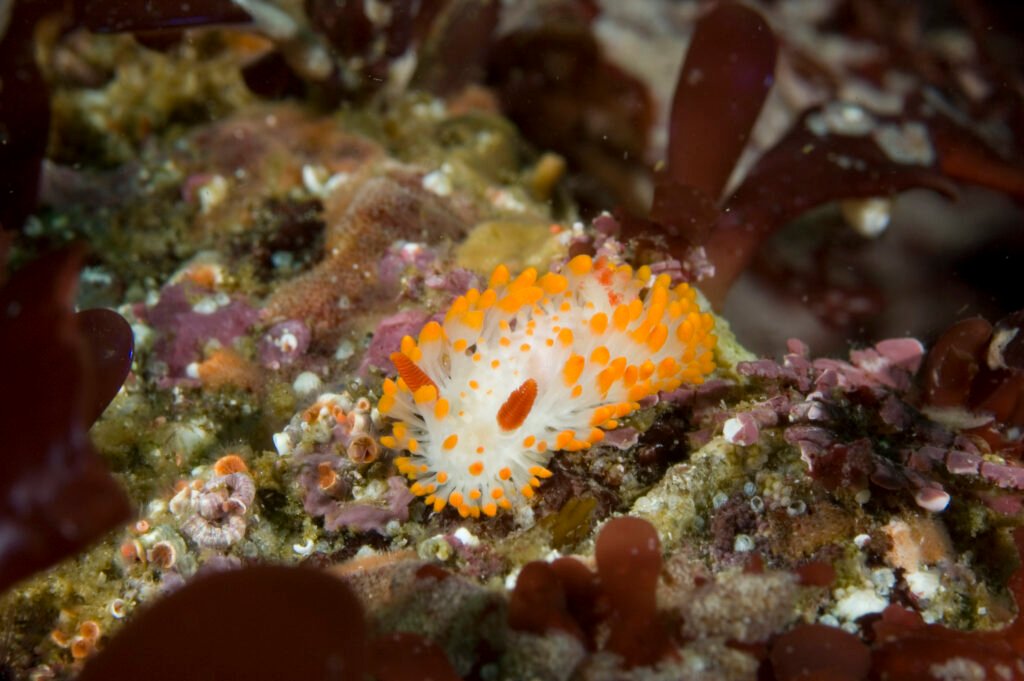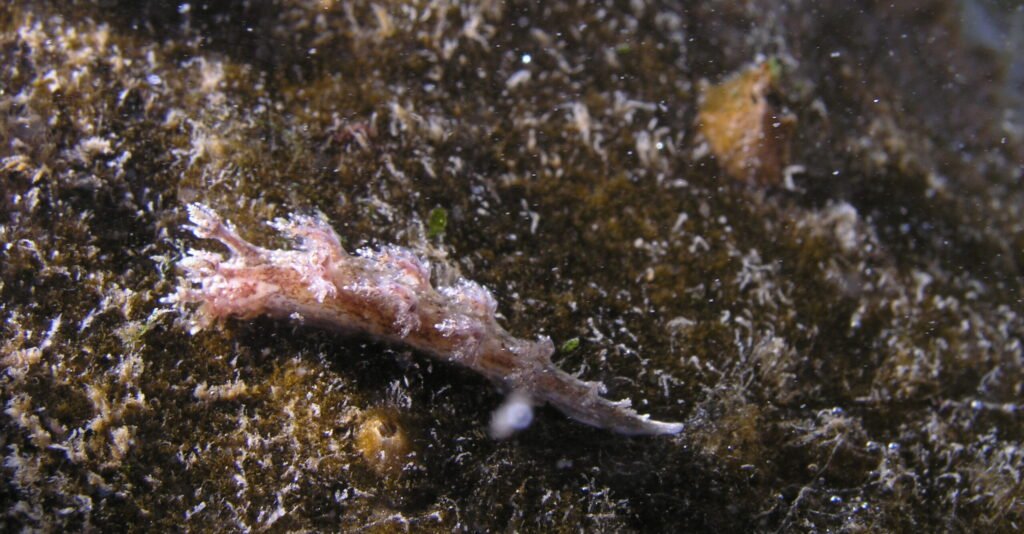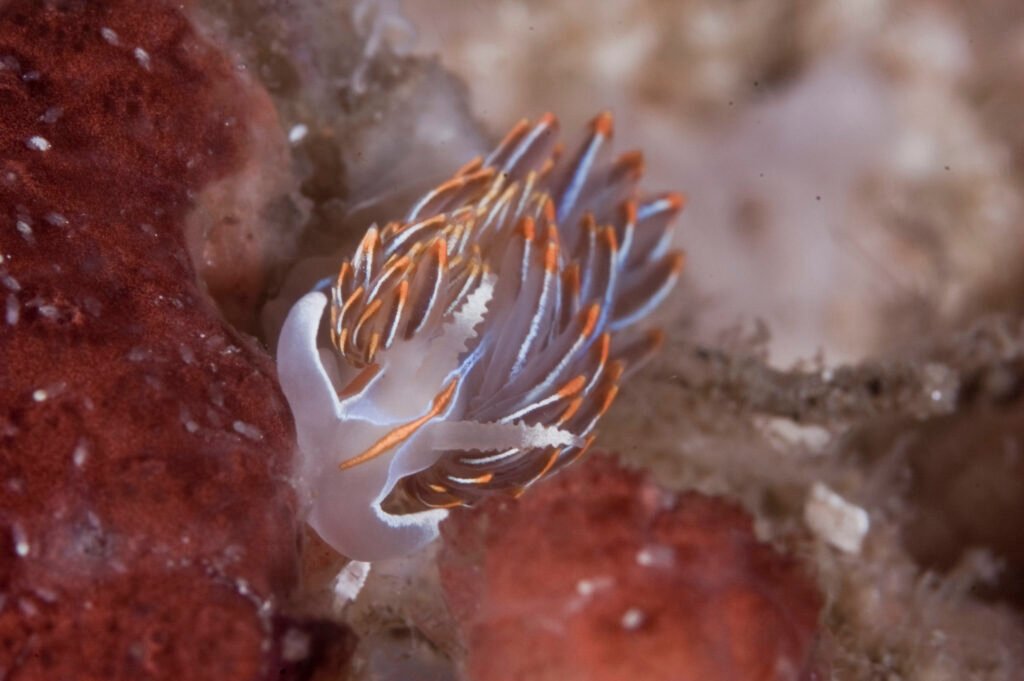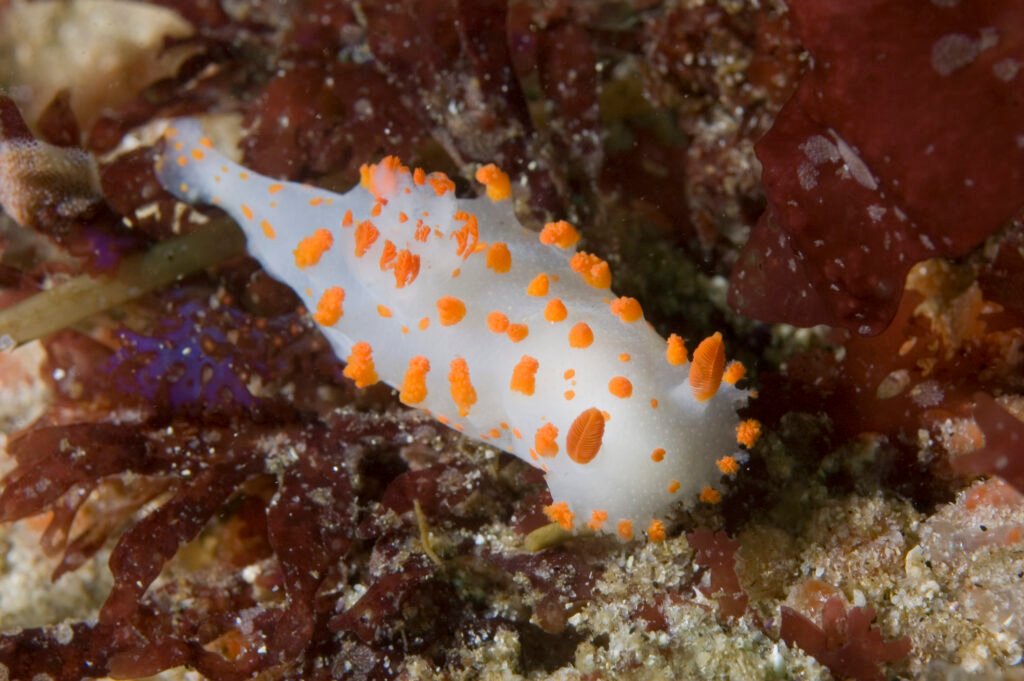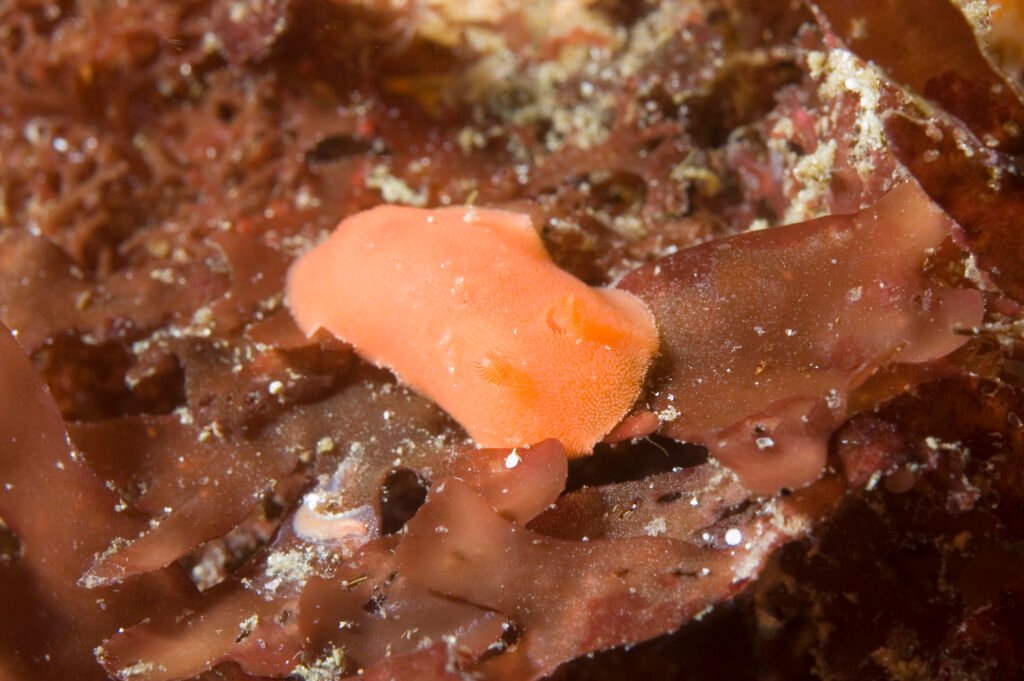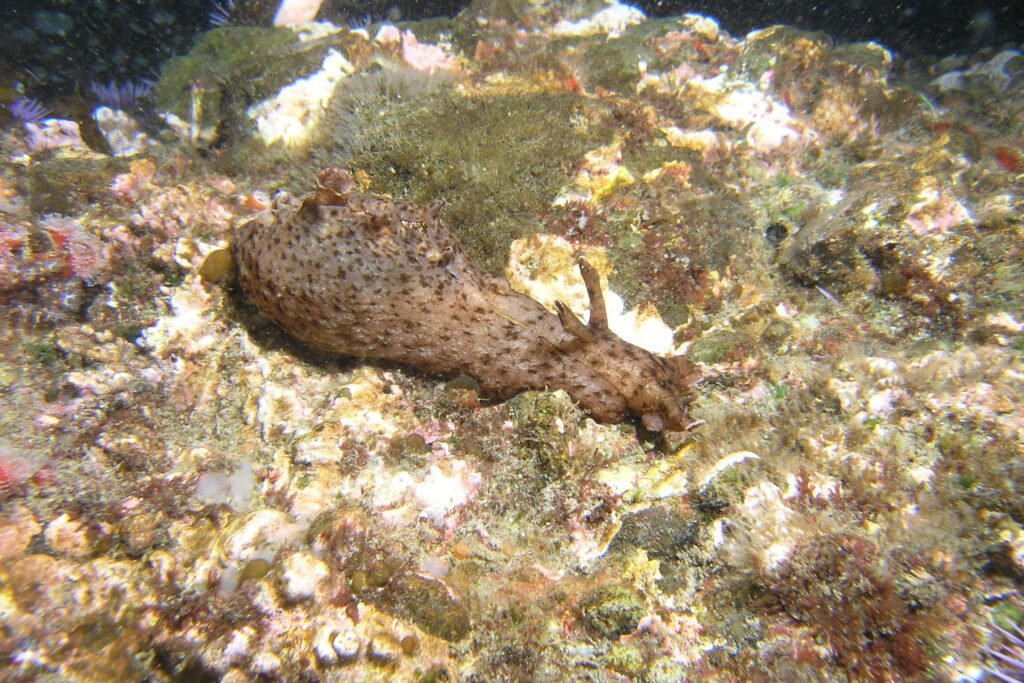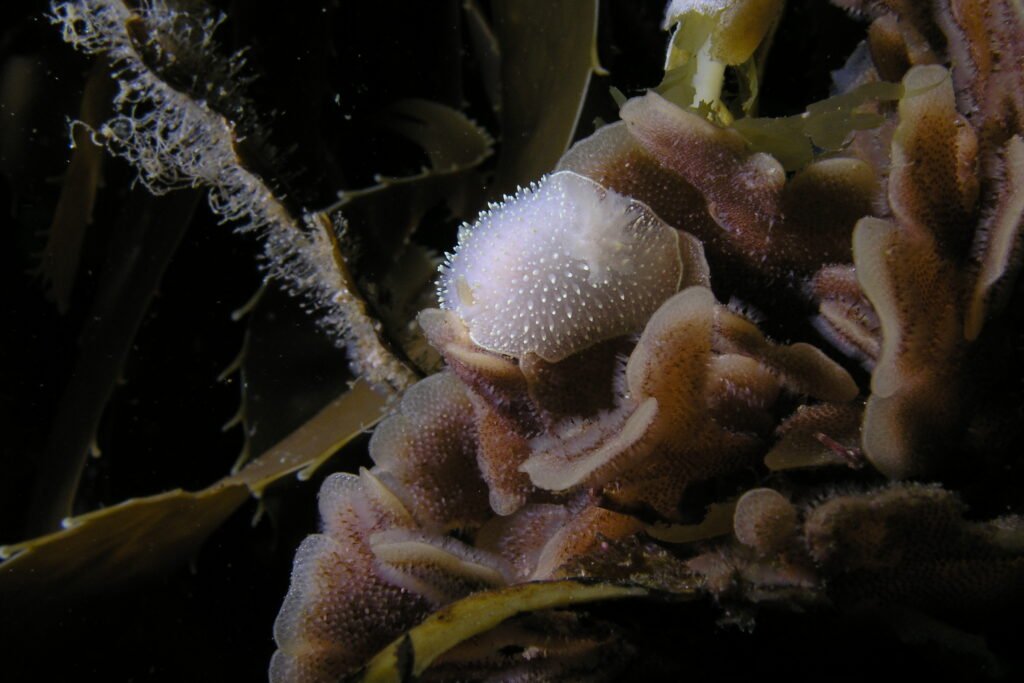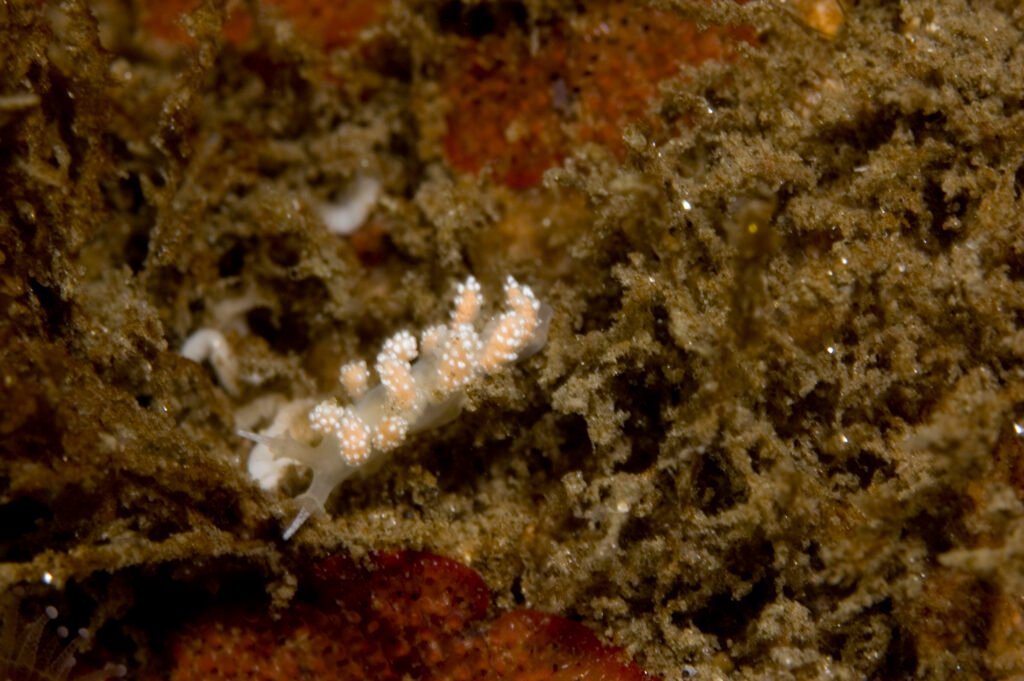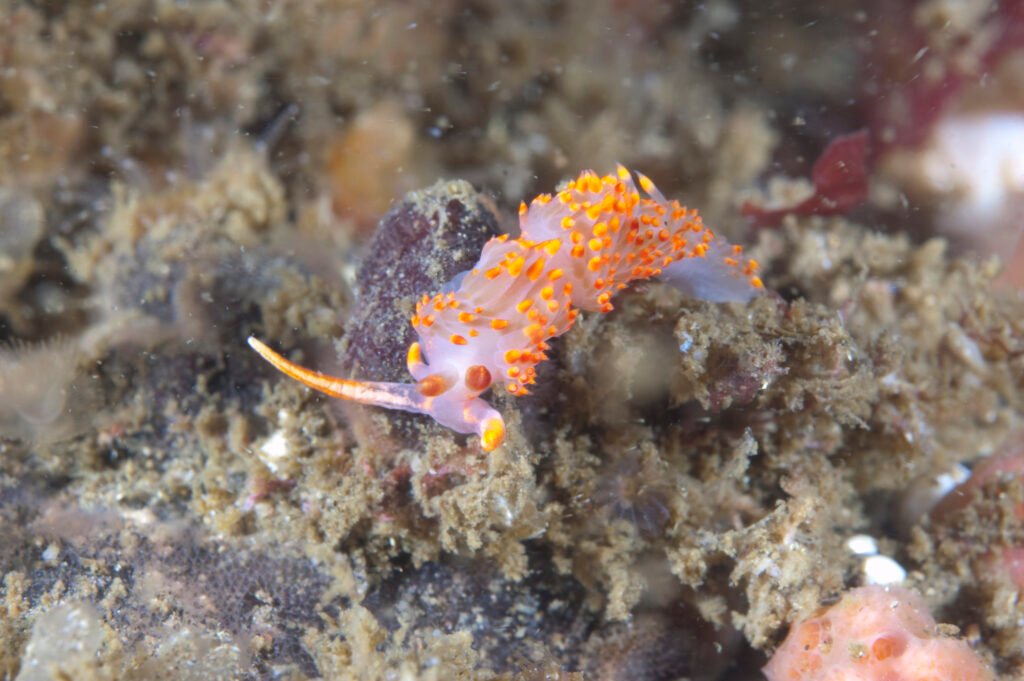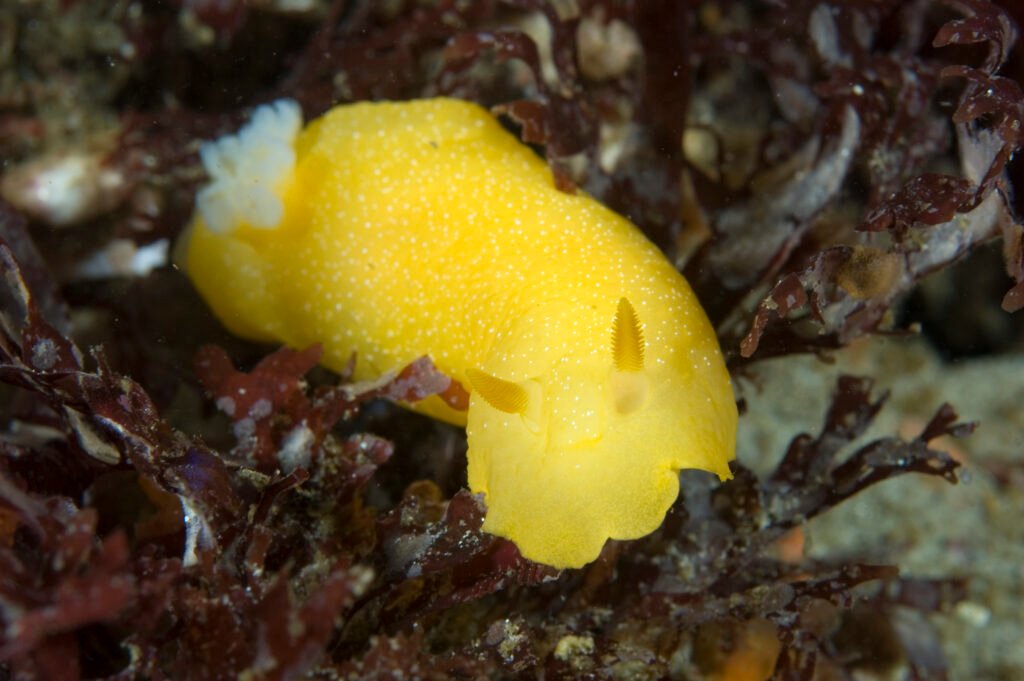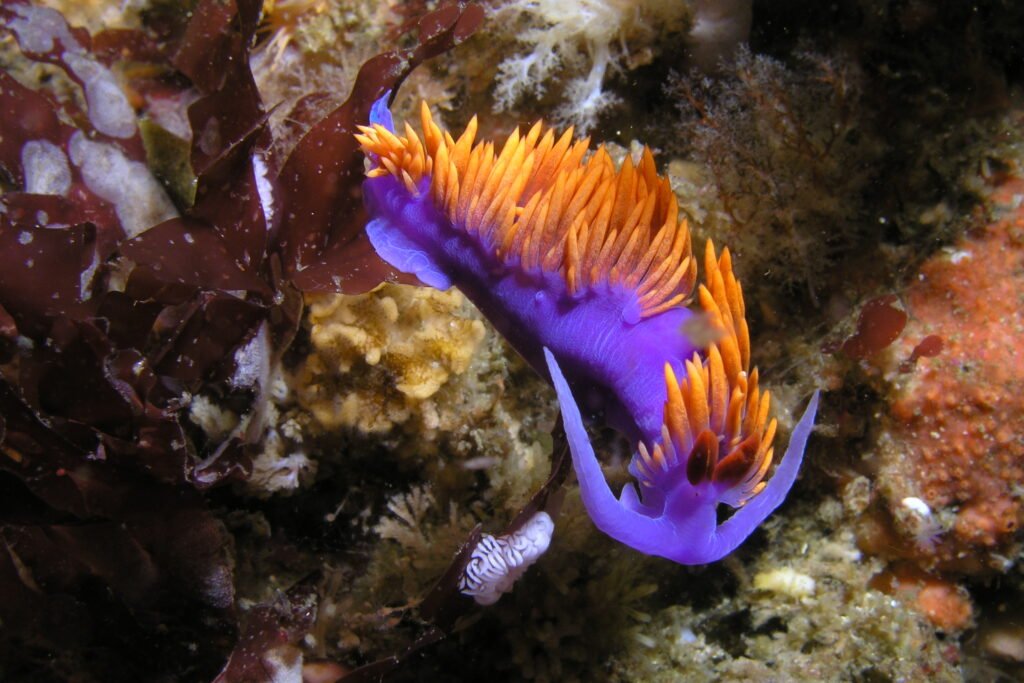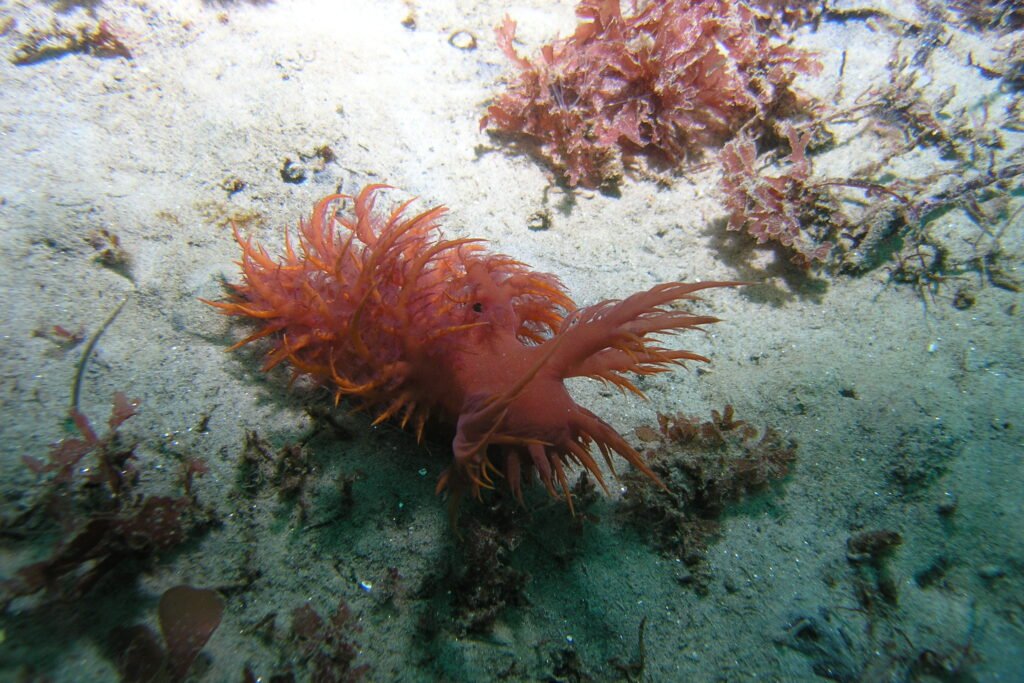Physical Description
Cockerell’s Dorid, scientifically known as Limacia cockerelli, showcases a translucent greyish-white to yellowish-white coloration. Its dorsum is adorned with numerous small, randomly distributed white tubercles, some of which may bear a small orange-red dot apically. The margin of the dorsum features elongate, rather clavate processes tipped with orange-red. Rhinophores exhibit a red-orange clavus and 10-16 lamellae, while the branchial plumes number 6-8 and are whitish, tipped with red-orange flecks. Labial tentacles are short and digitiform.
Habitat and Geographical Range
Cockerell’s Dorid can be found along the eastern Pacific coast, inhabiting rocky substrates in various marine environments.
What They Eat and How They Breed
This species likely feeds on sessile invertebrates, such as sponges, bryozoans, or tunicates, using specialized mouthparts to scrape off their prey’s tissue. As a nudibranch, it is a simultaneous hermaphrodite, meaning it possesses both male and female reproductive organs. Breeding involves the exchange of sperm between individuals, followed by the laying of eggs in gelatinous masses on suitable substrates.
